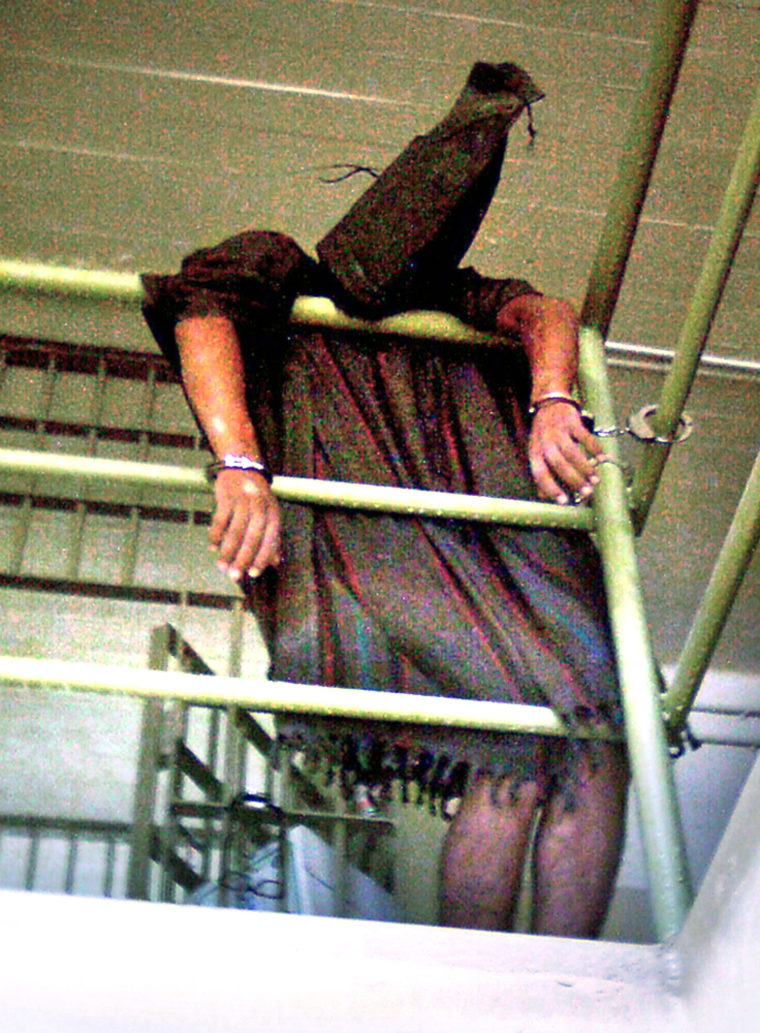A new Army manual bans torture and degrading treatment of prisoners, for the first time specifically mentioning forced nakedness, hooding and other procedures that have become infamous during the five-year-old war on terror.
Delayed more than a year amid criticism of the Defense Department’s treatment of prisoners, the new Army Field Manual was being released Wednesday, revising one from 1992.
It also explicitly bans beating prisoners, sexually humiliating them, threatening them with dogs, depriving them of food or water, performing mock executions, shocking them with electricity, burning them, causing other pain and a technique called “water boarding” that simulates drowning, said Lt. Gen. John Kimmons, Army Deputy Chief of Staff for Intelligence .
Officials said the revisions are based on lessons learned since the U.S. began taking prisoners in the war on terror after the Sept. 11, 2001, attacks.
Release of the manual came amid a flurry of announcements about U.S. handling of prisoners, which has drawn criticism from Bush administration critics as well as domestic and international allies.
The Pentagon also announced an overall policy statement on prisoner operations. And President Bush acknowledged the existence of previously secret CIA prisons around the world where terrorist suspects have been held and interrogated, saying 14 such al-Qaida leaders had been transferred to the military prison at Guantanamo Bay and will be brought to trial.
Human rights groups and some nations have urged the Bush administration to close the prison at the U.S. naval base in Guantanamo Bay, Cuba, since not long after it opened in 2002 with prisoners from the campaign against al-Qaida in Afghanistan. Scrutiny of U.S. treatment of prisoners shot to a new level in 2004 with the release of photos showing U.S. troops beating, intimidating and sexually abusing prisoners at Abu Ghraib in Iraq — and then again with news of the secret facilities.
Though defense officials earlier this year debated writing a classified section of the manual to keep some interrogation procedures a secret from potential enemies, Kimmons said Wednesday that there is no secret section.
CIA not covered
Defense Secretary Donald H. Rumsfeld has said from the start of the counter-terror war that prisoners are treated humanely and in a manner “consistent with Geneva Conventions.”
But Bush decided shortly after the Sept. 11 attacks that since it was not a conventional war, “unlawful enemy combatants” captured in the fight against al-Qaida would not be considered POWs and thus would not be afforded the protections of the convention.
The new manual, called “Human Intelligence Collector Operations,” applies to all the armed services. It doesn’t cover the CIA, which also has come under investigation for mistreatment of prisoners in Iraq and Afghanistan and for keeping suspects in secret prisons.
Good-cop/bad-cop allowed
Sixteen of the manual’s 19 interrogation techniques were covered in the old manual and three new ones were added on the basis of lessons from the counter-terror war, Kimmons said.
The additions are that interrogators may use the good-cop/bad-cop tact with prisoners, they may portray themselves as someone other than an American interrogator, and they may use “separation,” basically keeping prisoners apart from each other so enemy combatants can’t coordinate their answers with each other.
The last will be used only on unlawful combatants, not POWS, only as an exception and only with permission of a high-level commander, Kimmons said.
The Pentagon also on Wednesday released a new policy directive on detention operations that says the handling of prisoners must — at a minimum — abide by the standards of the Geneva Conventions and lays out the responsibilities of senior civilian and military officials who oversee detention operations.
“The revisions ... took time,” Deputy Assistant Secretary of Defense for Detainee Affairs Cully Stimson said at the briefing. “It took time because it was important to get it right, and we did get it right.”
Abu Ghraib led to changes
He said the directive pulls together policy changes recommended in a dozen investigations done after the Abu Ghraib scandal broke. “By publishing this document and the Army Field Manual, we will have addressed over 95 percent of the recommendations from those 12 major investigations since Abu Ghraib,” Stimson said.
Amnesty International USA’s director, Larry Cox, said he was “pleased to see a direct repudiation of tactics previously approved for use against detainees such as hooding, the use of dogs,” as well as the acknowledgment that the Geneva Conventions apply.
Among members of Congress briefed on the manual Wednesday, Democrats praised it as a step in the right direction and potentially helpful in preventing future prisoner abuse.
Republican Sen. John Cornyn of Texas said he was concerned that, because the techniques are unclassified, information from the manuals could be used by terrorists to resist interrogations.
